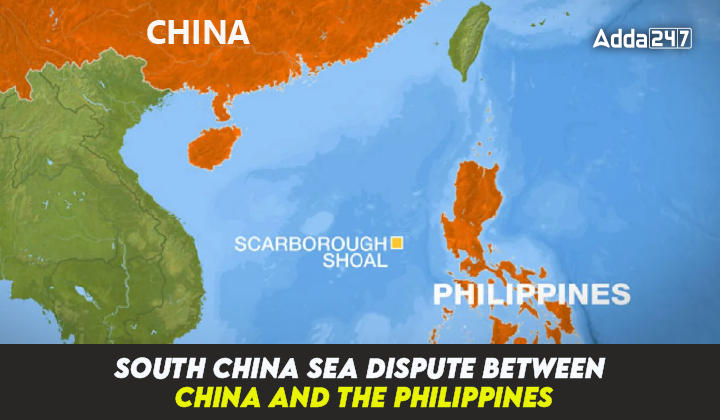Table of Contents
The South China Sea, a critical maritime resource corridor, has become the epicenter of escalating tensions between China and the Philippines. The latest confrontation underscores the urgent need for diplomatic engagement to navigate these troubled waters.
Incident at Second Thomas Shoal
Tensions spiked after a recent altercation where Philippine resupply missions were obstructed by Chinese actions deemed “reckless and illegal. “The confrontation occurred near Second Thomas Shoal, a significant site for the Philippines, marked by a warship sunk deliberately 25 years ago to assert sovereignty. The encounter resulted in “minor structural damage” to one of the Philippine vessels, highlighting the growing confrontations between the two nations’ coast guards.
Historical Flashpoints and Claims
China’s takeover of Scarborough Shoal in 2012 from the Philippines, despite a favorable ruling for Manila by the Permanent Court of Arbitration, remains a contentious issue. China’s expansive territorial claims encompass nearly the entire South China Sea, a stance that has led to multiple disputes with neighboring countries.
Shift in Philippine Strategy
Under President Ferdinand Marcos Jr., the Philippines has pivoted from the more conciliatory approach of his predecessor, Rodrigo Duterte, to a firmer stance on sovereignty issues. Enhanced strategic and defense ties with the U.S., including access to Philippine military bases and joint military exercises, signal a strategic realignment by Manila, much to Beijing’s chagrin.
Importance of the South China Sea
A Multifaceted Perspective
- Strategic Location: The South China Sea is bordered by China and Taiwan to the north, the Indochina Peninsula (consisting of Vietnam, Thailand, Malaysia, and Singapore) to the west, Indonesia and Brunei to the south, and The Philippines in the east (known as the West Philippine Sea) is a strategic location. The Taiwan Strait connects it to the East China Sea and the Luzon Strait to the Philippine Sea, both marginal seas of the Pacific Ocean.
- Importance of Trade: South China passed through it in 2016 with approximately 3.37 trillion dollars in trade. The sea is the main global trade route. According to the Center for Strategic and International Studies (CSIS), 80 percent of world trade is carried by sea, 60 percent through Asia, and a third through the South China Sea. In particular, China, the world’s second-largest economy, is very dependent on the South China Sea, which accounts for about 64 percent of its trade. In contrast, only 14% of US trade passes through these waters, while India depends on the region for about 55% of its trade.
- Fishing area: In addition to its strategic and economic importance, the South China Sea is a rich fishing ground for the country This feature contributes significantly to the livelihoods and food security of millions of people in the region and underlines the multifaceted importance of this important marine area.
Main disputes in the South China Sea?
The core of the South China Sea dispute is related to territorial claims to land areas (islands and reefs) and associated territorial waters. The main islands and reef formations in the South China Sea are the Spratly Islands, the Paracel Islands, the Pratas, the Natuna Islands, and Scarborough Shoal. Up to 70 disputed reefs and islets are in the fray, with China, Vietnam, the Philippines, Malaysia, and Taiwan building more than 90 outposts on them.
China claims up to 90% of the sea through its nine-dash map and has physically expanded the islands and built military facilities to ensure control. China is particularly active in the Paracel and Spratly Islands, engaging in extensive dredging. and construction of artificial islands since 2013. 3,200 hectares of new land have been created since. China also controls the Scarborough Shoal through a permanent Coast Guard presence.
Road Ahead- Towards Peaceful Resolution
- Diplomatic Dialogue: The need for dialogue and peaceful dispute resolution has never been more critical, with both nations standing at a crossroads between escalation and engagement.
- Regional Stability: China’s approach to its maritime claims and interactions with neighboring countries will significantly influence the regional geopolitical landscape and its relations within the ASEAN bloc.
Conclusion, Charting a Course for Cooperation
As the South China Sea continues to be a flashpoint for regional tensions, the path forward requires a concerted effort from all parties involved to prioritize diplomatic solutions over unilateral actions. The future stability of this vital maritime region hinges on the ability of China, the Philippines, and other stakeholders to navigate these complex waters through dialogue, cooperation, and adherence to international law.



 TSPSC Group 1 Question Paper 2024, Downl...
TSPSC Group 1 Question Paper 2024, Downl...
 TSPSC Group 1 Answer key 2024 Out, Downl...
TSPSC Group 1 Answer key 2024 Out, Downl...
 UPSC Prelims 2024 Question Paper, Downlo...
UPSC Prelims 2024 Question Paper, Downlo...
